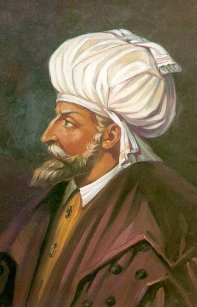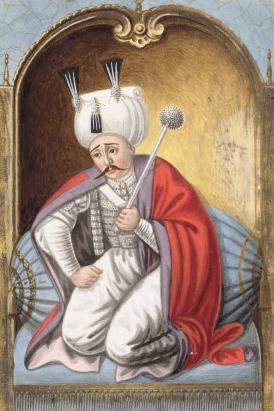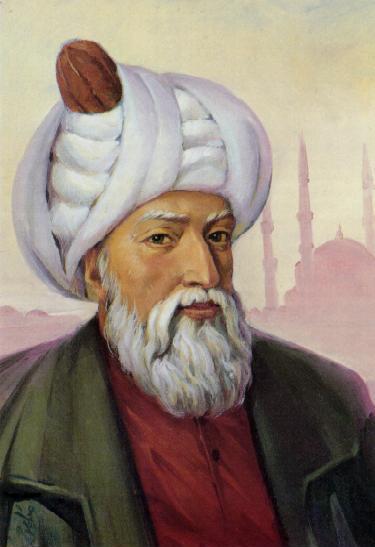This post has not been edited by the GamesBeat staff. Opinions by GamesBeat community writers do not necessarily reflect those of the staff.
 The Assassin’s Creed franchise, despite its narrative filled with the machinations of the defunct Templar order, makes an effort to be historically accurate. It gleefully places historic characters, such as Leornardo Da Vinci and Machiavelli, alongside its fictional characters. Assassin’s Creed: Revelations will take place in Constantinople 60 years after it fell to the Ottoman Empire. This fuses the worlds of assassins Ezio and Altair.
The Assassin’s Creed franchise, despite its narrative filled with the machinations of the defunct Templar order, makes an effort to be historically accurate. It gleefully places historic characters, such as Leornardo Da Vinci and Machiavelli, alongside its fictional characters. Assassin’s Creed: Revelations will take place in Constantinople 60 years after it fell to the Ottoman Empire. This fuses the worlds of assassins Ezio and Altair.
Manuel Palaiologos
We already know that Palaiologos will make an appearance. This heir to the Byzantine Throne returned to Constantinople late in life, witnessing an empire that he no longer held claim to. We also know that he died due to unknown causes in 1512. Heir to the former ruler? Mysterious death? You can safely assume that he’s going to eat it in Revelations. Whether Ezio is involved and how is conjecture.
Bayezid II

Bayezid II
A Jewish physician to Mehmed II, conqueror of Constantinople, he was implicated with Bayezid II in the assassination of the sultan by poison in 1481. If that’s not enough to garner an appearance in the game, perhaps the fact that he was Italian-born might have enticed the writers to pen him in. He apparently ended up in Adianople, former capital of the Ottoman Empire prior to Mehmed’s seizure of Constantinople, to live out his life.
Selim I
Successor to Bayezid II, Selim I was not a particularly nice guy. He forced his father to abdicate, struggled for power with his brother, and executed a good part of his immediate and extended family. He ruled the Ottoman Empire from 1512 to 1520, where upon he was succeeded by Suleiman the Magnificient. We know we’re going to see a young Suleiman, but whether the events will span all the way to 1520 to witness Selim’s suspicious death (allegedly poisoned by a physician, much like his grandfather) is anyone’s guess. I suspect they may. This game, after all, is about assassinations.

Selim I
It’s been confirmed we’ll be seeing Ahmet in the game. Why not? He was appointed heir by his father, was challenged by Selim’s claim to the throne, and started a big, dirty civil war from 1512-1513. Unfortunately, his death was pretty straightforward: He was executed by his brother. Should make for a dramatic plot point, though.
Korkut
Poor Korkut. After witnessing the battle between Selim and Ahmet, the third son of Bayezid II stood clear of the fracas and eventually supported Selim’s claim to the throne. Of course, that didn’t stay Selim’s suspicions — he eventually had Korkut executed after attempting to implicate him in a plot to overthrow him.
Joseph and Moses Hamon
More Jewish physicians, but this father and son team hailed from Granada, Spain. They attended to both Bayezid II and Selim I during their reigns. Given that Bayezid II might have poisoned his fatherand Selim I could have succumbed to poison himself, these two characters may appear in some capacity. Since the Borgias of the first two Ezio adventures are from Spain, one can easily see narrative possibilities.
Mimar Sinan
Sinan is the best bet for this game’s version of Leonardo Da Vinci. He was the chief architect and engineer for Suleiman and his successors, he is responsible for many of the greatest architectual wonders of modern-day Istanbul. Unfortunately, he didn’t begin this career until later in life, so Ezio won’t be parkouring over and around his magnificent structures. That said, he was an officer of the Janissary Corps, the sultan’s personal troops and bodyguards, and given his aptitude for engineering, he could play a signficant role in the game.

Mimar Sinan
As to what will actually happen in Assassin's Creed: Revelations, it's anyone's guess. What is certain is that the producers of the game were very clever in picking the era and setting for their story. Constantinople in the early 16th century may be the perfect time and place to tie together the 11th century crusades and 15th century political struggles of Rome and the northern Italian states.
